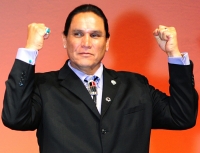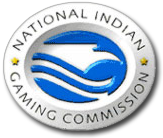
One word denotes the first quarter-century of the Indian Gaming Regulatory Act.
Opportunity.
Momentous achievements mark this landmark period in tribal history. Indian Country sports an estimated $27 billion-and-counting gaming industry, spread across several hundred casinos of varied size, shape and nuance.
Small outfits produce a modest revenue source for members on reservations. Mid-level casinos combine moderate overhead with hints of corporate clout. They feature the sleek hotel design—often with tribal culture etched into the layout—along with hotels and convention space.
Large, multibillion-dollar facilities feature Fortune 500 sophistication. Their portfolio includes slick marketing, deep financial pockets and significant political connections with state and federal governments.
It’s been 27 years since the Cabazon Band of Mission Indians launched this process with its legal victory over the state of California. The ruling set a precedent for discouraging state regulation of the tribes, put the onus on Congress and led one year later to the Indian Gaming Regulatory Act.
A pragmatic aftermath remains. Tribes increasingly enter the potentially lucrative commercial gaming sphere. They use sovereignty as bargaining chips, ceding some jurisdictional power in lieu of taxation.
States benefit too, often with yearly guarantees from Native American operations. The revenue is enlarged by taxation on jobs held by non-tribal employees and through tribal sales to vendors.
With the tribes, states have a partner, and a customer. In places like California and Connecticut, tribal payouts to state governments have reached billions of dollars. Ironically, a large recipient of tribal guarantee money is the state of California. Conflict has indeed given way to compacts.
Like any lucrative industry, gaming yields ups and downs for tribal enterprises. Not all of them have understood the need to grow sensibly. Some have also suffered from internal strife and the underlying issues of poverty, health care and limited education. And even the largest operators have made mistakes.
But more than a quarter century after IGRA, the tribal gaming success pendulum swings toward strong business instincts, and away from battles with the United States government.
Pala: One Powerful Executive
There are exceptions to that formula. Robert Smith represents the dominant leader theory for the Pala Band of Mission Indians near San Diego. He is chairman for the tribe, which runs the Pala Casino Spa and Resort on the Pala Indian Reservation. Smith pre-dates IGRA by one year and has witnessed the steady progression of tribal gaming fortunes.
The finished product, for now, is a 10,000-square-foot spa, 2,000 slots, 87 table games and 10 restaurants. The property has significant amenities to complement its 500 rooms and 82 suites. This beautiful facility, draped in the lucrative California market, depicts the blend of strong tribal leadership and a community partner.
Under Smith, the Pala group went from an outfit seeking an identity into a major power broker. It has become a $250 million customer of Wells Fargo and Bank of America, from whom it borrowed money to finance its state-of-the-art facility several years ago.
While the Pala enterprise unfolds on its own land, it needed the help of non-tribal groups, like the bank, to push it forward. That made sovereignty a delicate term.
“We had to tell them that if, for any reason, this did not succeed, they could not foreclose on our land,” Smith says. “In any typical negotiation, they would be able to do that, but not with us. Our land will always be our land. It was kind of hard for them to understand that at first, but they got past that point.”
Winners emerged. The Pala group used other people’s money to build its empire and the bank had a long-term customer. Pala later obtained a second $125 million loan for expansion and has paid down most of its debt.
“We only owe about $40 million now,” Smith says. “We could pay it off but would rather leave the credit open in case we decide to do a facelift.”
The creditors and the state of California became winners too.
In lieu of taxation, Pala pays $18 million to the state, $7 million-$8 million locally and develops community pillars like high schools and hospitals, open to tribal and non-tribal citizens, according to Smith.
“We also have 1,900 jobs, many which are filled by people outside the tribe,” he says, “and we spend $80 million a year with outside vendors, from whom we buy meat, fish, gambling devices, etc. It is pretty lucrative for them.”
Money can be cycled into the government coffers twice. Beyond the $18 million guarantee from the tribe, California and the federal government receive tax money from non-tribal employees.
“Negotiations have to be win-win,” Smith insists. “From the tribal standpoint, we are sure to protect the culture. The sovereignty part is very important. It also goes a long way in negotiations, but at the same time, you need partners outside of the reservation.”
That formula also concerns gaming’s next golden goose. Smith, the chairman of the California Tribal Business Alliance, says he has personally helped the effort to bring two online gaming bills before the California legislature. He hopes they pass by the end of the summer, enabling all state tribes the option of establishing online gambling.
“It would take from $10 million to $20 million to get started, so most tribes in California would not be able to do it,” Smith asserts, “but this is another case in which everyone will benefit. We will negotiate a fee for the state and we also will build a call center, etc. Hopefully, we will get this one over the finish line.”
Pala has joined with former PartyPoker chief Jim Ryan to form Pala Interactive. While the tribe has not revealed its plans for this venture, an early announcement that Pala has partnered with poker superstar Phil Ivey is just an indication that Pala has grand visions for a legal iPoker industry in California.
Smith says the tribe has undergone scrutiny from the National Indian Gaming Commission in the past. But he is not averse to any tedious licensing procedure, even in tough states like New Jersey, should that be needed. In the California bills that legalize iPoker, the tribes would be automatically licensed, and tribal partners would go through a rigorous vetting process. The entities would be commercial operations that operate separately from the tribal gaming endeavors.
“You get used to the idea that they will ask you about where you went to grammar school, who your neighbors were, did you ever have a speeding ticket, etc.,” he says. “That’s not a problem for us. We are on the up-and-up.
“They won’t have to go far to see where I’ve been,” he laughs. “I’ve spent my entire 53 years on this reservation. It is an absolutely beautiful place.”
Seminole Hard Rock: Tick, Tick, Tick
Major tribes worry even less about the aspect of sovereignty. The states that license them have a vested interest in Native American operations. Gaming plugs holes in state budgets.
Hard Rock International, owned by Florida’s Seminole tribe, embodies the corporate powerhouse model of tribal commercial participation.
Business acumen, community partnerships and legislative arm-twisting unfold on major stages. Three of Hard Rock’s recent projects illuminate the reality.
Ohio is at the top of the list where Hard Rock created the first “rocksino” at the Northfield Park Racetrack outside of Cleveland. The new facility opened in late 2013 and has been a resounding success.
In Massachusetts, it was one of the early applicants to build the first major casino before local voters in West Springfield rejected the idea last year.
In New Jersey, Hard Rock obtained a ruling from the Division of Gaming Enforcement about who should be licensed in the event it obtains the Revel Casino Hotel in Atlantic City.
And in Florida, its home base, Seminole Hard Rock wages a frantic race against time. Its 2014 goal was to extend a state compact expiring in 2015 before new casinos can be built in their area. The tribe has reportedly paid the state $233 million annually since the agreement began in 2010. For that money, it has gained the right to be the exclusive major operator in the rich South Florida destination resort area.
This negotiation unfolds amid the backdrop of more casinos being considered for Broward and Dade Counties. The Seminoles, naturally, want no company. The state, seeking more revenue, may view the issue differently. Tribal officials have been resourceful, however. They cite studies saying the impact of more casinos would be negligible, because Florida residents already spend the majority of gaming dollars. They also mention that the five-year deal ending in 2015 will have produced more than $1 billion to the state.
In this case, tribal leaders need to establish relationships with powerful United States congressmen and the Florida governors to advance their agenda. They need to know legislative language. They need lobbying clout.
So they turn to Jim Allen.
The New Jersey native was the leader in the tribe’s 2006 purchase of Hard Rock International, which was a chain of novelty restaurants with seven or eight hotels and a couple of casino hotels. Today, the company has about $4 billion in annual gross revenues with 138 branded cafés, as well as hotels, casinos and concert venues in 54 countries. About 32,000 people either work directly for the company or its franchises.
Allen’s stature overshadows the fact he reports to a board of directors and a tribal council. His thinking goes both outside the box and into the smallest realm of detail. He is an inspiring figure the Seminole council trusts and depends upon.
The New Jersey ruling confirmed his credentials. In February, the Division of Gaming Enforcement ruled that the council members and elected representatives of the Seminole Tribe did not require licenses to operate the Revel casino in Atlantic City, should Hard Rock purchase it. Allen and his management team, however, must go through that stringent regulatory process.
Should Hard Rock become an Atlantic City casino owner, Allen will return to an area in which he once worked for roughly minimum wage. It would be quite a story, both for him and the Seminole Tribe.
Mohegan Sun and Foxwoods: Big Players, Different Views
In many respects, Mohegan Sun is linked with Foxwoods, 20 minutes away in Connecticut. On their own, the two would probably rank as one of the world’s largest gaming markets.
Their paths diverge in the commercial enterprise area, however.
Non-conventional gaming has become a clear element of the Mohegan Sun business plan. It became the first Native American tribe to own a professional sports franchise when it acquired the Connecticut Sun of the WNBA.
Several years ago, Mohegan Sun purchased Pocono Downs in Pennsylvania and began transforming the facility. Major racing arrived there, as did 2,500 slot machines and electronic table games, several dining options, six retail outlets, three bars/lounges and a bus passenger lounge. Last December, a hotel was added.
And the beat goes on. Mohegan Sun was one of the first gaming companies involved in Massachusetts, partnering with Palmer in the state’s western region. But when a local election narrowly defeated gaming in the town, another opportunity immediately arose.
Caesars Entertainment was forced to withdraw as a partner with Suffolk Downs for the Boston-area license. As Suffolk Downs searched for a replacement for Caesars, the logic behind a Mohegan Sun partnership emerged. The tribe’s gaming division, Mohegan Tribal Gaming Authority (MTGA), has already been vetted by the state gaming commission and had financing lined up to build a facility in the $1 billion range. So Mohegan Sun is now a finalist, perhaps even the front-runner, to obtain the lucrative casino license. To become one of the final two (along with Steve Wynn), Mohegan Sun needed to think creatively.
Revere voters in November approved its proposal at Suffolk Downs, on the East Boston line, but East Boston rejected it. Mohegan Sun came back with a proposed $1.3 billion facility that would be built entirely in Revere and voters accepted it. The commission has said it expects to award the license by June 30.
Mohegan Sun has a large in-house organizational structure, but leans heavily on two major executives.
Tribal Chairman Kevin Brown brings a 25-year United States Army career to his post. His background included extensive leadership and organizational management experience in deployed combat environments.
Mitchell Etess gives Mohegan Sun its most seasoned gaming executive. He is chief executive officer of the MTGA. For several years, Etess held dual roles as CEO for MTGA and president and CEO for Mohegan Sun until 2011, when he decided to focus efforts solely on corporate diversification as CEO of MTGA. His gaming career began in the Trump organization in Atlantic City in the 1980s.
The Foxwoods saga, meanwhile, takes a different route on the commercial enterprise question. It appeared ready to build a Pennsylvania casino four years ago and then stopped because of financial problems. Foxwoods is pursuing a casino in neighboring Massachusetts. Like Mohegan Sun, after suffering a defeat in a local election, Foxwoods has moved on to launch a commercial casino proposal in Fall River. But unlike Mohegan Sun, the Foxwoods plan is a long shot since the southeast region where the casino would be located is currently reserved for a tribal casino built by the Wampanoag Mashpee tribe.
And Foxwoods recently restructured more than $2 billion in debt, proving even the big tribal players are subject to the same financing pitfalls as commercial operators.
The Mashantucket Pequot tribe generated nearly $2 billion for the state of Connecticut on its first 10 years of operations by guaranteeing $80 million annually or 25 percent of slot revenues. It is one of the largest casinos in the world, the pioneer of modern-era tribal gaming in the United States and a place that always appeared to print money.
In the online space, Foxwoods has set up an interactive division and partnered with WMS Interactive and GameAccount Network to develop social gaming sites that can instantly be transformed to real-money sites, should the laws be changed.
But restructuring of debt brought up a sticky situation. Investors were concerned that tribal members would receive payouts ahead of them. A deal was eventually worked out that gives debtors first crack at the revenue, but the issue will remain active going forward.
Investors will have to decide, going in, whether they can endure the sovereignty aspect in case of refinancing or foreclosure.
A Tale Of Two Roads
There are two dramatically different tribal gaming worlds, says Theron “Scarlet Raven” Thompson, a former casino general manager, marketing executive and compact writer who now consults with more than 100 tribes. As a high-school dropout who forged his way to three decades of gaming experience, Thompson is sensitive to the unheralded side of tribal gaming.
“The major entities like Foxwoods, Hard Rock and Mohegan Sun comprise one part of the story, but the remainder of it is that 80 percent-90 percent of the casinos are just breaking even or doing a little better than that, and they are providing jobs on the reservations,” he says. “The real focus is improving the high school graduation rates (by turning gaming revenue into the building of schools, etc.). We are improving but there is a long way to go.
“In Minnesota, the graduation rates have improved from 37 percent to 42 percent in the last 10 years, which is significant, but African-American and Latinos have made larger strides outside of Indian Country. The Latino graduation rate is approximately 57 percent.”
Thompson, an enrolled member of the Sisseton-Wahpeton Oyate (Dakota Sioux Indian) of the Lake Traverse Reservation, embodied a “representation without taxation” theory in his compact dealings. He said his tribe reached full-blown Las Vegas gaming capability with the state of North Dakota without surrendering a fixed tax. Thompson said he also partnered with former Green Bay Packer Max McGee to get a Kansas compact for the Prairie Band of Potawatomi tribe in 1992.
Most of Thompson’s clients have been tribal leaders who simply envision a couple steps forward for their people. They don’t claim to be gaming powerhouses.
Tribes and their neighboring communities do form natural ties. For states, what use was taxing the tribes if that triggered the sovereignty hot button? For tribes, what use was sovereignty if it prevented a non-tribal work force from helping them run the casino?
Common sense prevailed, and tribal payouts to states fit better than taxation. As for scrutiny of the tribes, Thompson says some even welcome it.
“The multiple layers of oversight give some tribes security, and they feel that having tribal, state and federal levels of oversight is a good thing to break the potential nepotism at the tribal level,” he indicates.
Sovereignty has proven to be both a blessing and detriment. Tribal members feeling disenfranchised, for example, cannot appeal to the U.S. government, because it lacks jurisdiction on sovereign land. Politics is bound to surface when money escalates.
Thompson says success awaits those who can separate financial church and state. He cites Foxwoods, Mohegan Sun and Hard Rock as masters of the formula.
“They have a business council which operates separately from the tribal council,” he says. “There may be a certain dollar amount, like $500 million or a billion dollars that may require council approval because it would be tied to the assets of the tribe.
“If it is not tied to the assets of the tribe, however, the feeling is to let the people with the résumés make the decisions.”
This is just one wrinkle amid the complex nature of tribal commercial establishments. There will always be bumps in the road. Commercial enterprises will remain case-by-case endeavors.
But as the second quarter-century dawns, tribal gaming can bask in the warmth of an auspicious debut.














